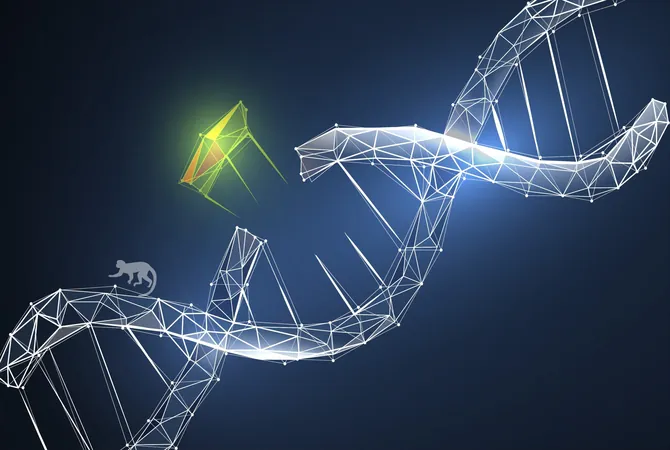
Revolutionary PiggyBac Transposon System Enables Creation of Transgenic Cynomolgus Monkeys: A Leap Forward in Genetic Research!
2025-03-26
Author: John Tan
Introduction
In a groundbreaking achievement, researchers at the Institute for the Advanced Study of Human Biology (WPI-ASHBi) in Kyoto, Japan, have successfully utilized a nonviral genetic engineering system to create transgenic cynomolgus monkeys. This pivotal advancement offers a promising solution to the limitations faced by traditional virus-based gene delivery methods in non-human primates.
Research and Methodology
Dr. Tomoyuki Tsukiyama, associate professor specializing in developmental engineering and stem cell biology, described this innovation as a potential turning point for the field of genetic engineering. "Our research represents a milestone," he stated, highlighting the method's efficiency in introducing transgenes that could pave the way for new insights into complex human diseases.
Published in the prestigious Nature Communications, the research outlines the use of the piggyBac transposon system as a nonviral alternative. Previous methods, which relied on viral vectors such as lentivirus, were fraught with challenges including the need for specialized containment facilities and limitations on the size of genetic material that could be transported. Additionally, these conventional techniques often made it impossible to select modified embryos precisely before their implantation.
Advantages of PiggyBac Transposon System
What sets the piggyBac transposon system apart is its flexibility in carrying larger transgenes and its capability for early stage embryo confirmation, enabling better screening processes before embryo transfer. This increases the chances of successfully producing genetically modified primates who carry specific desired traits.
Key Findings
After fine-tuning their protocols using mouse models, the research team found that co-injecting piggyBac components with sperm into mature oocytes resulted in transgenic monkeys expressing targeted genes throughout their bodies. Fluorescent reporter genes—specifically red fluorescent protein targeting cell membranes and green fluorescent protein localizing to cell nuclei—were successfully expressed across various tissue types, including germ cells. This robust expression indicates the stable introduction of the transgenes.
Despite the successful integration pattern observed across different tissues, expression levels of the transgenes varied. This variability highlights the importance of selecting appropriate gene promoters tailored to specific tissues. For instance, genes like OCT3/4 and DDX4 are crucial for germ cell lineage differentiation, while SYN1 and THY1 are essential for neuronal lineage specification. By choosing the right promoters, researchers can optimize gene expression to achieve desired results, a vital step toward advancing genetic models of diseases.
Future Directions
Looking forward, the team intends to expand the scope of this nonviral transposon system to include multiplex gene expression and sophisticated transgene control mechanisms. They are also investigating how to incorporate epigenetic information to better understand gene regulation at the molecular level. This refined approach may unlock new avenues for exploring disease mechanisms that elude traditional rodent models, thereby enhancing our comprehension of complex human health conditions.
Conclusion
The implications of this breakthrough are enormous, not just for genetic research but also for the potential development of novel therapeutic strategies. As scientists continue to harness the power of genetic engineering in non-human primates, who knows what discoveries await us just around the corner! Could this be the key to curing some of humanity's toughest ailments? Stay tuned!


 Brasil (PT)
Brasil (PT)
 Canada (EN)
Canada (EN)
 Chile (ES)
Chile (ES)
 Česko (CS)
Česko (CS)
 대한민국 (KO)
대한민국 (KO)
 España (ES)
España (ES)
 France (FR)
France (FR)
 Hong Kong (EN)
Hong Kong (EN)
 Italia (IT)
Italia (IT)
 日本 (JA)
日本 (JA)
 Magyarország (HU)
Magyarország (HU)
 Norge (NO)
Norge (NO)
 Polska (PL)
Polska (PL)
 Schweiz (DE)
Schweiz (DE)
 Singapore (EN)
Singapore (EN)
 Sverige (SV)
Sverige (SV)
 Suomi (FI)
Suomi (FI)
 Türkiye (TR)
Türkiye (TR)
 الإمارات العربية المتحدة (AR)
الإمارات العربية المتحدة (AR)